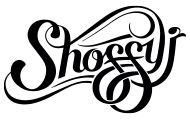There are Reasons to be Creative after all! Day 1

Recently I attended the Reasons to be Creative festival in Brighton. After scribbling down numerous notes, I have tried to summarise some of the inspiring, sometimes obvious pointers, I took away from the festival.
Day 1:
On day one of the festival, I began in Relly Annett-Baker‘s session, which covered tips on how to structure presentations. The main points from this were to make sure there is one idea per slide, to speak slowly and overall tell a story. If you forget what you were meant to talk about then just move on, there’s nothing to be ashamed about.
Memo Atken was next with his aptly titled seminar of “F*ck Clients”. His seminar was all about interaction and how he has had the freedom to do what he feels the target audience would want to see. The lasting impression he put across was that it’s not important what you created, but how you felt when interacting with it.
Inayaila De Leon‘s session on the most important part of your job was very inspiring. She first recommended the book “How to win friends and influence people” by Dale Carnegie. The essence of this was that trying to win people over where logic does not apply is always difficult. In addition, peoples’ willingness to work a lot harder is dependent on if there is meaning to and appreciation of their work.
When it comes to the workplace people are quick to go on the defensive rather than admit something is their fault. She referenced an Al Capone quote to back this up: “I have spent the best years of my life giving people the lighter pleasures, helping them have a good time, and all I get is abuse, the existence of a hunted man”- illustrating that if people who committed murders can justify themselves, then anyone can. It’s predictable, somethings are your fault. Furthermore, she recommended the book “Design Professionalism” by Andy Rutledge, to justify culpability, with the quote “Perhaps most importantly, professionalism means, in every situation, willfully gathering responsibility rather than avoiding it.”
Inayaila likes an inspirational quote to back up her principles and she referenced Henry Ford when it comes to success- “If there is any one secret of success, it lies in the ability to get to other person’s point of view and see things from that person’s angle as well as from your own.” Collaboration is therefore a way to get the most out of your work, as sometimes people can be too overprotective of work and will challenge decisions they haven’t been involved in. She advocates inviting participation in your work, asking for feedback and then registering it and understanding it. This helps to listen and understand emotions.
Finding a shared vocabulary can be key to this, it’s imperative that you’re a good communicator in writing too. Reading and writing makes you better and Mark Twain said it best “The man who does not read has no advantage over the man who cannot read.” Her over-arching point to this was that if you build a narrative people can associate with, then you make a story.
Her concluding point summarised that communication is always key in design. Martin Luther King made light of this when he said: “People fail to get along because they fear each other; they fear each other because they don’t know each other; they don’t know each other because they have not communicated with each other.”
Dan Mall‘s session entitled “Designish” was probably session of the day. Dan is a hybrid between a designer and a developer. His introductory point was that all clients are created equal- but some clients are more equal than others. This got a few laughs in the auditorium.
Dan liked to talk about the processes he used to overcome complex amounts of content and how to structure them in websites or other digital platforms. He referenced the Star Wars website he worked on, where relatedness/relevance was an important system in its design. He needed to show the connections between various characters, time and events. When trying to understand data, he designed a fake CMS to understand how to translate data into build. He believes humans are better than algorithms, as they pick up any mistakes. However, even with his fake CMS to gather all data of what characters relate to who, what stories characters are most relevant in and so on, this was not required. This is because Lucas Film had someone internally who had all this knowledge documented. So his point was that sometimes getting the client involved as a partner, can help solve a problem by collaborating to use their internal knowledge. This would have saved him a lot of time had he done this from the start. Basically clients are your team.
Big sites need smarter work, not more work. The client-facing deliverable isn’t always the most important thing to make. Don’t spend all your time in front of a computer, research and absorb information. His article “Invisible Deliverables” demonstrates this. An example he gave was when your Art Director makes lots of sounds and hand gestures to show how he envisages animations within a website. His solution is to make a movie file of how you envisage the motion, for example, and then this can be a reference point to adjust and amend until it is right.
Dan encourages Stuart Kauffman’s “Adjacent Possible” theory, which pretty much defines that unlikely combinations can often prove fruitful. For example combining people in your work that you wouldn’t usually, like having a Project Manager come in on the design brainstorm. The adjacent possible is outlined further, referencing Kauffman’s theory in a Wall Street Journal article entitled “The Genius of the Tinkerer“.
Dan Mall used Kutiman’s Youtube channel as a case in point where the adjacent possible is embraced, to create music from different users’ Youtube videos.
Another example is http://mostawesomestthingever.com/ where putting two things that are seemingly incomparable together, comes up with something really cool.
He believes Steve Jobs shared this analogy, when he said “Creativity is just connecting things. When you ask creative people how they did something, they feel a little guilty because they didn’t really do it, they just saw something. It seemed obvious to them after a while.”
Dan then went on to discuss the process he went through to design his own website. Many of us can design for others easily, but find it impossible to design for ourselves- I’m one of those people! That’s why he talks about design in terms of “moments”- a moment of interaction, pauses, hierarchy etc. He used moments from different versions he made of his website and then compiled them together to make the final design.
After this Dan referenced another article of interest: “An important time for design” by Cameron Koczon. He went on to state that ideas are worthless without the right execution. Mike Quintero said “design is a job”. “The client doesn’t get this” is sometimes the case because we’re not doing a good enough job of communicating it. To get clients on side, we design what’s on screen but we don’t design the experience of working with us, which we should do. That was the notion of his mentor Ian Coyle, who he holds in high esteem in the design world.
Ros Horner, a Senior Designer at Sapient Nitro, the world’s largest and UK’s number one digital agency, held an amusing session on “Things I wish I’d thought of”. Her first thought was how do we define ourselves as designers? She found the best description as an “idea engineer”. She continued to summarise designers, saying: designers have to be good at lots of things. Design is a life long process. Designers work all the way up to the deadline.
Don’t give up, the dots will eventually connect.
As her session was called “Things I wish I’d thought of”, she went on to show us some of these things. Such as Candy Chang’s “Before I die” and “Career Path” typographic social experiments. These were great examples of how simple design in the right context can create a massive buzz of social interaction. Another concept she wished she thought of was Superette’s Short shorts sale promotion, where they made indented plates across the city of Auckland, so that when people sat down the message imprinted on their thighs.
This quote by Frank Gehry was quite applicable to her way of working and how she thinks people should approach their work: “For me, every day is a new thing. I approach each project with a new insecurity, almost like the first project I ever did. And I get the sweats. I go in and start working, I’m not sure where I’m going. If I knew where I was going I wouldn’t do it.” Basically there is a lot of fear in the workplace- Atelophobia- the fear of not being good enough.
Ros went on to speak about how working for a huge corporate company can sometimes be too corporate. She documented a tale of how she was asked to make internal posters for post-work Olympics Drinks this summer, yet the design got so watered down due to political correctness and HR getting too fussy about offending people. What was supposed to be a light hearted humorous poster, ended up being simply words on a piece of paper. She then pointed to David Ogily and how he overcomes this at his agency, when he said “Try to make working at Ogilvy and Mather fun. When people aren’t having any fun, they seldom produce good advertising. Kill grimness with laughter. Maintain an atmosphere of informality. Encourage exuberance. Get rid of sad dogs that spread gloom.”
Finally she recommended reading this article called “12 Traits of a Seriously Creative Graphic Designer“.


ugg boots cheap at 12:57 pm, October 5, 2012 -
Great posts, especially this one !! thank you!
edwardltibbetts at 12:52 am, October 8, 2012 -
Thank you very much. This really helped me with my work. I appreciate your help. Thanks a lot.
bannerdps at 7:51 pm, October 11, 2012 -
Thanks for such a great post and the review, I am totally impressed!